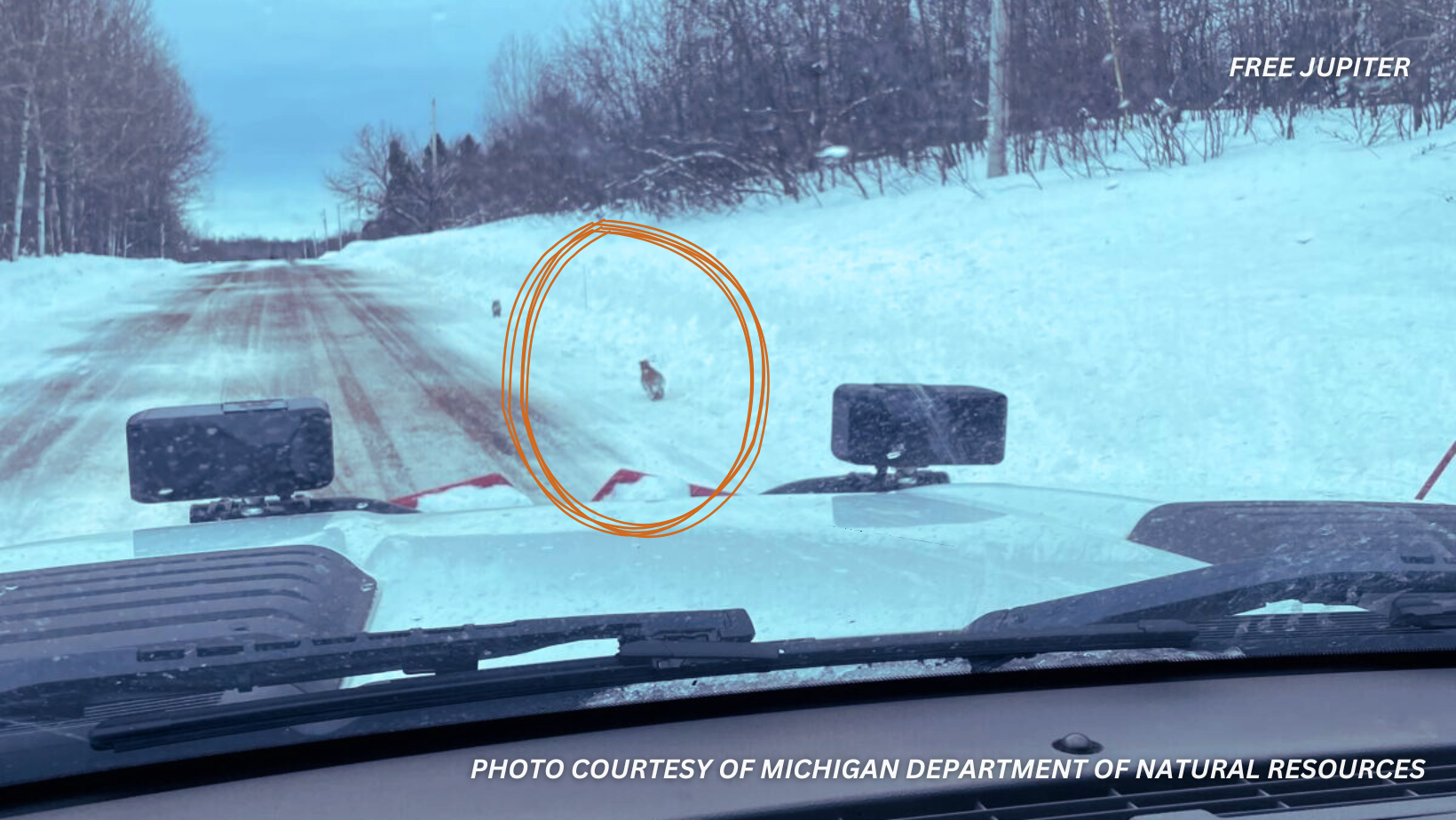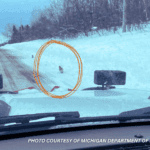In a moment both historic and eerily symbolic, the dark forests of Michigan’s Upper Peninsula have given up a secret long thought lost to the ages. For the first time in more than a century, photographs have verified the existence of cougar cubs in the state a finding that has sent shockwaves through the conservation world and reignited a dormant page in Michigan’s environmental history.
These photographs, taken unobtrusively by a private individual in March 2025 in Ontonagon County and subsequently verified by the Michigan Department of Natural Resources (DNR), represent so much more than an unusual sighting of wild animals. They promise the potential for natural recolonization of one of North America’s most enigmatic apex predators, a turning point in local conservation and the promise of ecological renewal where only absence had previously existed.
A Ghost Species Remembered
Long before human settlement altered Michigan’s terrain, cougars also referred to as mountain lions or Puma concolor wandered unencumbered across the Great Lakes. Respected for their cunning and feared for their power, these solitary hunters once performed a critical function in maintaining ecological balance by controlling herbivore populations like white-tailed deer. Their presence guaranteed forest renewal and conserved diversity through a series of interactions called trophic cascades.
But by the early 20th century, the cougar’s reign in Michigan had ended with a sudden and brutal force. Systematic removal efforts brought on by fear, the promise of government-issued bounties, and expanding settler encroachment culminated in the death of the last recorded wild cougar near Newberry in 1906. And with that, the species was declared extinct locally.
For generations, the animal lived only in legend and hearsay—its fleeting tracks explained away as errors, its sightings called delusions. In many people’s minds, the cougar became a “ghost species,” a disappeared predator that existed only in campfire stories and fanciful folklore.
Read more: Researchers Were Left Speechless After Opening Up A 3,000 Year Old Crocodile
Why 2025 Marks a Turning Point
While over 130 confirmed adult cougar sightings have taken place in Michigan since 2008, wildlife authorities had always explained these as transient males, most likely from established populations in the western United States. These males, while formidable travelers, had left no indication of settling down no dens, no cubs, and most importantly, no females.
The recent photos showed two cougar cubs, which were estimated to be only 7 to 9 weeks old. Their existence is groundbreaking because it suggests successful reproduction locally. At least one female cougar—shy and untracked—had crossed into Michigan, bred, and given birth. In conservation circles, this news marks the start of a potentially self-sustaining population, indicating that the habitat might again be suitable for these predators.
It’s a discovery that redefines what many had suspected about the status of the cougar in Michigan: not merely an occasional visitor, but possibly one who has become a return inhabitant.
Trophic Cascades and Ecological Renewal
The return of cougar cubs with them is the promise of an entire ecological rebirth. Cougars and other apex predators help to regulate ecosystems. By hunting mainly deer, cougars prevent overgrazing and keep herbivore numbers under control, letting vegetation rebound. This has positive effects on many other animals—songbirds, small mammals, even insects that depend on robust vegetation to survive.
Wherever top predators have been eliminated, ecosystems tend to get out of balance. In Michigan, uncontrolled deer herds have left a quantifiable effect on the regrowth of forests. The return of the cougar could act as a natural check, and this could restore an ecological richness that has been absent for more than a century.
Read more: Study Says That Crows Can Hold A Grudge For Up To 17 Years
The Fragility of Early Recolonization
In spite of the optimism generated by the sighting, there are serious concerns. The cubs were photographed in the absence of their mother, and there is fear for their short-term survival. Cougar cubs rely on maternal care for up to two years, learning crucial survival techniques. Without their mother, their survival chances are minimal, given the threat from predators, starvation, and human activity.
To date, April 2025, there has been no sighting of either the cubs or the mother. Although this is not conclusive proof of a tragic demise, it does speak to the chancy nature of wildlife recolonization. Success depends on many factors—ranging from food and habitat protection to the availability of secure migratory pathways and the diminution of human-related dangers.
The DNR is currently ramping up monitoring efforts, employing trail cameras, scent stations, and public reporting systems to gather more data. But until more is known, the fate of Michigan’s first cougar family in over a century remains uncertain.
The Human Factor: Conflict, Coexistence, and Conservation
The cougar’s return inevitably stirs up old axieties and raises practical issues. Cougars, as large carnivores, can be a menace to cattle and, in the extremely unusual situation, to people. Formerly, such fears were sufficient reason to eradicate them.
Now, wildlife authorities have the challenge of educating the public and getting rural communities ready for the reality of living with wildlife. Contemporary conservation is not just about conserving species but also about making human-wildlife interactions safe and sustainable.
Balancing farmers’ and ranchers’ needs with conservation objectives will be paramount. Public education, livestock loss compensation programs, and proactive mitigation will probably become necessary tools for dealing with this delicate reintroduction.
Read more: Old Friend Shares Steve Irwin’s Final Words, Captured on Film
Part of a Larger Movement
Michigan’s cougar kittens are not an isolated event but part of a broader continental trend. Throughout the United States, cougars are spreading eastward from their stronghold in the Rocky Mountains and western states. Enhanced habitat connectivity, legal protection, and changing public opinion have contributed to such long-distance dispersals being possible.
Other states Missouri, Iowa, and even Illinois have also made cougar sightings, some of which have included documented breeding. So, Michigan’s experience may well follow the model of neighboring states, representing a wider rewilding movement rewriting the contemporary map of North America’s top predators.
A Glimmer of Hope Amid Uncertainty
The verification of cougar cubs in Michigan following over a hundred years of their absence is an intense moment of celebration and vigilance. It defies the story of permanent environmental loss and confirms nature’s resilience—its quiet, determined capacity to return, if merely provided the opportunity.
But this is not just a story of victory; it is an appeal to action. What happens next will be up to policymakers, scientists, citizens, and communities. The future of the cougar in Michigan is in a precarious balance, suspended between rebirth and withdrawal.
If tended to with care, this might be a story of hope—a testament to the strength of resilience and coexistence. If handled poorly, it threatens to be another page of ecological sorrow.
Michigan is at a turning point. And the paw prints in the snow are reminding us to make wise choices.










